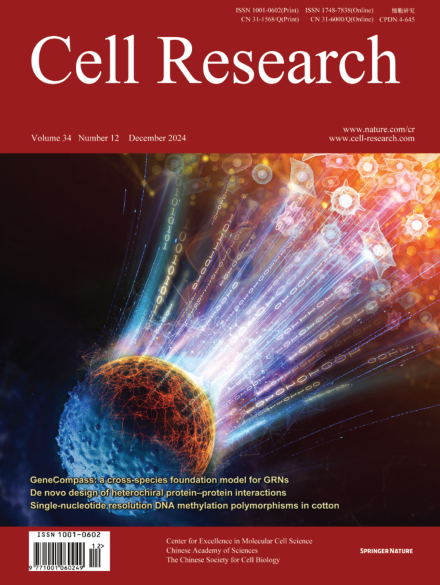
Advanced Search
Submit Manuscript
Advanced Search
Submit Manuscript
Volume 34, No 12, Dec 2024
ISSN: 1001-0602
EISSN: 1748-7838 2018
impact factor 17.848*
(Clarivate Analytics, 2019)
Volume 34 Issue 12, December 2024: 846-858 |
Accurate de novo design of heterochiral protein–protein interactions
Ke Sun1,2,3,4,† , Sicong Li2,3,4,† , Bowen Zheng2,3,4,† , Yanlei Zhu2,3,4,† , Tongyue Wang5,† , Mingfu Liang3,4 , Yue Yao2,3,4 , Kairan Zhang3,4 , Jizhong Zhang3,4 , Hongyong Li3,4 , Dongyang Han5 , Jishen Zheng6 , Brian Coventry7,8 , Longxing Cao2,4,7,8 , David Baker7,8 , Lei Liu5,* , Peilong Lu2,3,4,*
1College of Life Sciences, Zhejiang University, Hangzhou, Zhejiang, ChinaAbiotic D-proteins that selectively bind to natural L-proteins have gained significant biotechnological interest. However, the underlying structural principles governing such heterochiral protein–protein interactions remain largely unknown. In this study, we present the de novo design of D-proteins consisting of 50–65 residues, aiming to target specific surface regions of L-proteins or L-peptides. Our designer D-protein binders exhibit nanomolar affinity toward an artificial L-peptide, as well as two naturally occurring proteins of therapeutic significance: the D5 domain of human tropomyosin receptor kinase A (TrkA) and human interleukin-6 (IL-6). Notably, these D-protein binders demonstrate high enantiomeric specificity and target specificity. In cell-based experiments, designer D-protein binders effectively inhibited the downstream signaling of TrkA and IL-6 with high potency. Moreover, these binders exhibited remarkable thermal stability and resistance to protease degradation. Crystal structure of the designed heterochiral D-protein–L-peptide complex, obtained at a resolution of 2.0 Å, closely resembled the design model, indicating that the computational method employed is highly accurate. Furthermore, the crystal structure provides valuable information regarding the interactions between helical L-peptides and D-proteins, particularly elucidating a novel mode of heterochiral helix–helix interactions....
https://doi.org/10.1038/s41422-024-01014-2